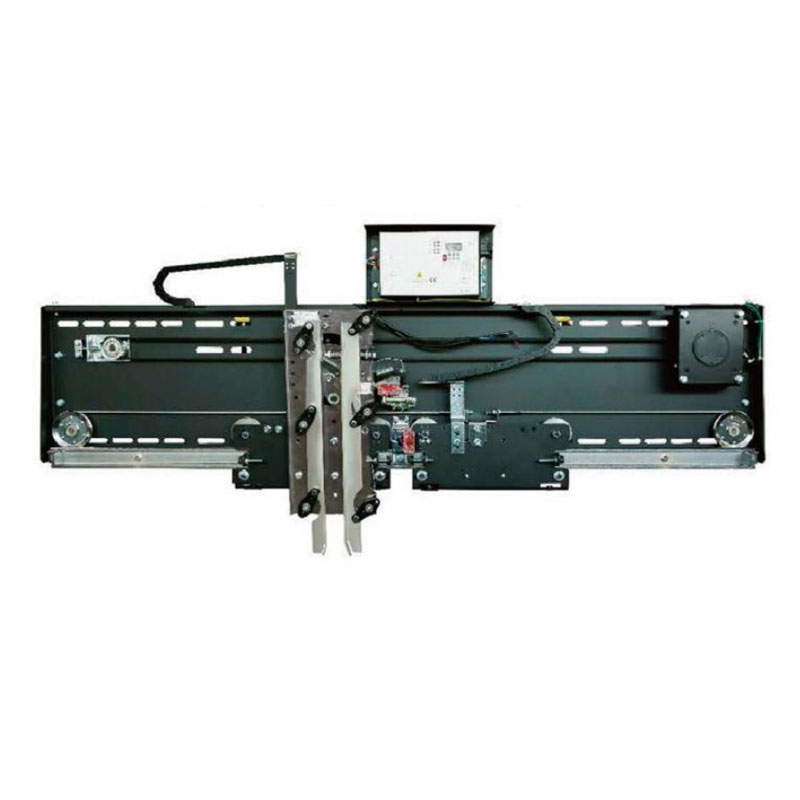What are the basic components of an elevator?
2024-12-05
An elevator system consists of several key components, each playing a vital role in its functionality, safety, and efficiency. Here’s an overview of the basic components of an elevator:
1. Elevator Car
- Definition: The compartment that transports passengers or goods between floors.
- Structure: Made of a sturdy frame and enclosed with walls, a ceiling, and a floor.
- Features: Equipped with interior lighting, ventilation, and fixtures like buttons and displays for floor selection.
2. Hoistway (Shaft)
- Definition: The vertical passage in which the elevator car travels.
- Design: Includes guide rails and space for counterweights and cables.
- Safety: Sealed to prevent unauthorized access and protect internal mechanisms.
3. Traction System
For traction elevators:
- Ropes and Cables: Steel ropes or cables connect the elevator car to the counterweight.
- Counterweight: Balances the car to reduce motor load and improve energy efficiency.
- Sheaves (Pulleys): Direct cables and ensure smooth vertical movement.

4. Machine Room
- Purpose: Houses the elevator’s motor and control systems.
- Components:
- Motor: Drives the elevator system (traction motor for traction elevators).
- Controller: Manages elevator operation, such as speed, stopping, and starting.
5. Control System
- Function: Coordinates the elevator’s movements, ensuring it stops precisely at each floor.
- Types: Includes microprocessor-based systems for modern elevators or relay-based systems in older models.
- Features: Handles requests, monitors safety devices, and adjusts operation based on usage patterns.
6. Guide Rails
- Purpose: Provide a stable path for the elevator car and counterweight.
- Location: Installed along the hoistway walls.
- Material: Made of steel for strength and durability.
7. Doors
- Cabin Doors: Automatically open and close at each floor.
- Hoistway Doors: Installed at each floor to align with the cabin doors.
- Safety Mechanisms: Include sensors to prevent doors from closing on passengers.
8. Drive System
The drive system varies by elevator type:
- Traction Elevators: Use motors and counterweights with cables.
- Hydraulic Elevators: Use hydraulic cylinders and pistons powered by fluid to lift and lower the car.
9. Safety System
- Brake System: Engages in case of motor failure to prevent the car from falling.
- Speed Governor: Monitors and controls the speed of the elevator car.
- Buffer: Installed at the bottom of the hoistway to absorb energy if the elevator overruns its lowest floor.
- Emergency Brakes: Automatically activate if the elevator overspeeds or a cable fails.
10. Operating Panels
- Inside the Car:
- Buttons for floor selection.
- Emergency call button and alarm.
- Indicator displays showing floor number and direction.
- On Each Floor:
- Call buttons to summon the elevator (up/down).
11. Suspension System
- Purpose: Supports the elevator car and counterweight.
- Components: Includes steel cables or belts that bear the weight of the car and counterweight.
12. Power Supply
- Source: Provides electricity for the motor, lights, and control system.
- Backup Power: Ensures elevator operation during power outages in critical settings.
13. Ventilation and Lighting
- Ventilation: Keeps the interior comfortable for passengers.
- Lighting: Illuminates the car and displays.
14. Emergency Systems
- Alarm System: Alerts building personnel in emergencies.
- Intercom or Phone: Allows communication with the building’s security or maintenance staff.
- Escape Hatch: In the ceiling of the car for emergency rescues.
15. Additional Features
- Weight Sensors: Prevent operation if the car is overloaded.
- Fire Safety Systems: Include smoke detectors and recall systems to bring the elevator to a safe floor during a fire.
- Modern Features: Include touch panels, keycard access, and destination dispatch systems.
Conclusion
Each component of an elevator works together to ensure smooth, safe, and efficient transportation within buildings. Understanding these parts helps in troubleshooting, maintenance, and choosing the right type of elevator for specific applications.


